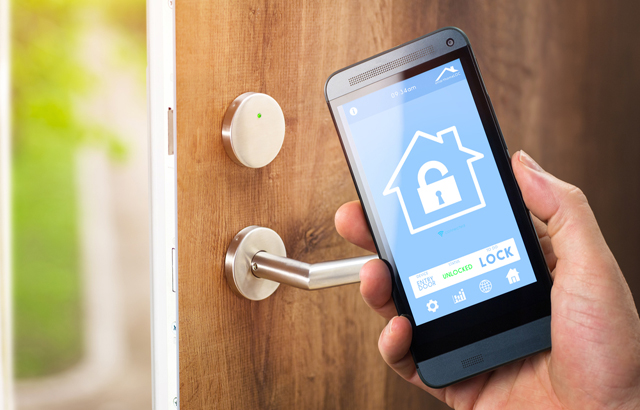The Consumer Electronics Show, held annually in Las Vegas, Nevada, has come a long way since it first opened its doors to the public in 1967 both in terms of size and scope. It’s a giant today, attracting hundreds of thousands of visitors from all over the world, with some astonishing tech on show, the kind that would have been unimaginable close to half a century ago.
As ever, ESET is once again in attendance, offering you expert insight into all the security aspects of this year’s show, which, from what have seen so far, is a key focus for CES in 2016.
From the swarms of cops and drug-sniffing dogs at the entrances to the hired hands that guard the flanks, there is a sense that we are vulnerable. In years past, security was a sideshow. That’s changed. Nowadays people know that they have to secure stuff to keep safe.
There’s also an even greater understanding that our digital devices can be an effective foothold for scammers, except now, that digital foothold on your smartphone can unlock you house, oh, and now it can unlock your safe, too.
The ubiquity of the Internet of Things

This year, it is difficult to find something that is not connected somehow to IoT writ large. Everything is connected, from the grip on your golf club to the insoles in your running shoes (assuming you did not buy the 3D printed ones custom built for your feet), to the dolls your child might play with. So while bad guys might get past the goons at the door with the drug-sniffing dogs, the perimeter you need to protect just became very large indeed.
"In 2015, security was more of an aside. Now almost all vendors know at some level they must protect their gadgets."
Luckily, since there is a more somber assessment of security among gadget manufacturers, talking about security issues here doesn’t elicit as much of a blank stare as last year at CES.
In 2015, security was more of an aside, with a comparatively tiny section of the giant sprawling mega-plex that is CES devoted to the subject. Now almost all vendors know at some level they must protect their gadgets, if only to avoid bad press.
Speaking of a big perimeter, ESET researchers recently reported on the Black Energy-related attacks on the power industry in Ukraine, so scammers are scaling up as well as down. So while the IoT needs to think about security, everything from the very large to the very small is in the crosshairs.
Still, the obvious missing link is user education, or rather trying to cope with the huge growth curve of the swarm of tiny computers around you relative to understanding where to focus your security attention.
While we have new huge attack surfaces to focus on, often the toeholds are those nasty digital intersections that tie the whole mess together: the home Wi-Fi router. Since all things digital in your house will be discussing things between themselves, if attackers can gain a foothold in your router, they can snoop a large trove of digital gold, assessing what devices you are using and slurping up the details as they traverse through its routing table.
So while there may be lots of digital endpoints you will now purchase by the dozen, there are certain ways to protect yourself that will arise in the next generation of digital security, and while we saw only a smattering of those next-gen technology security players here this year, they’ll be coming soon to an IoT sensor near you.




